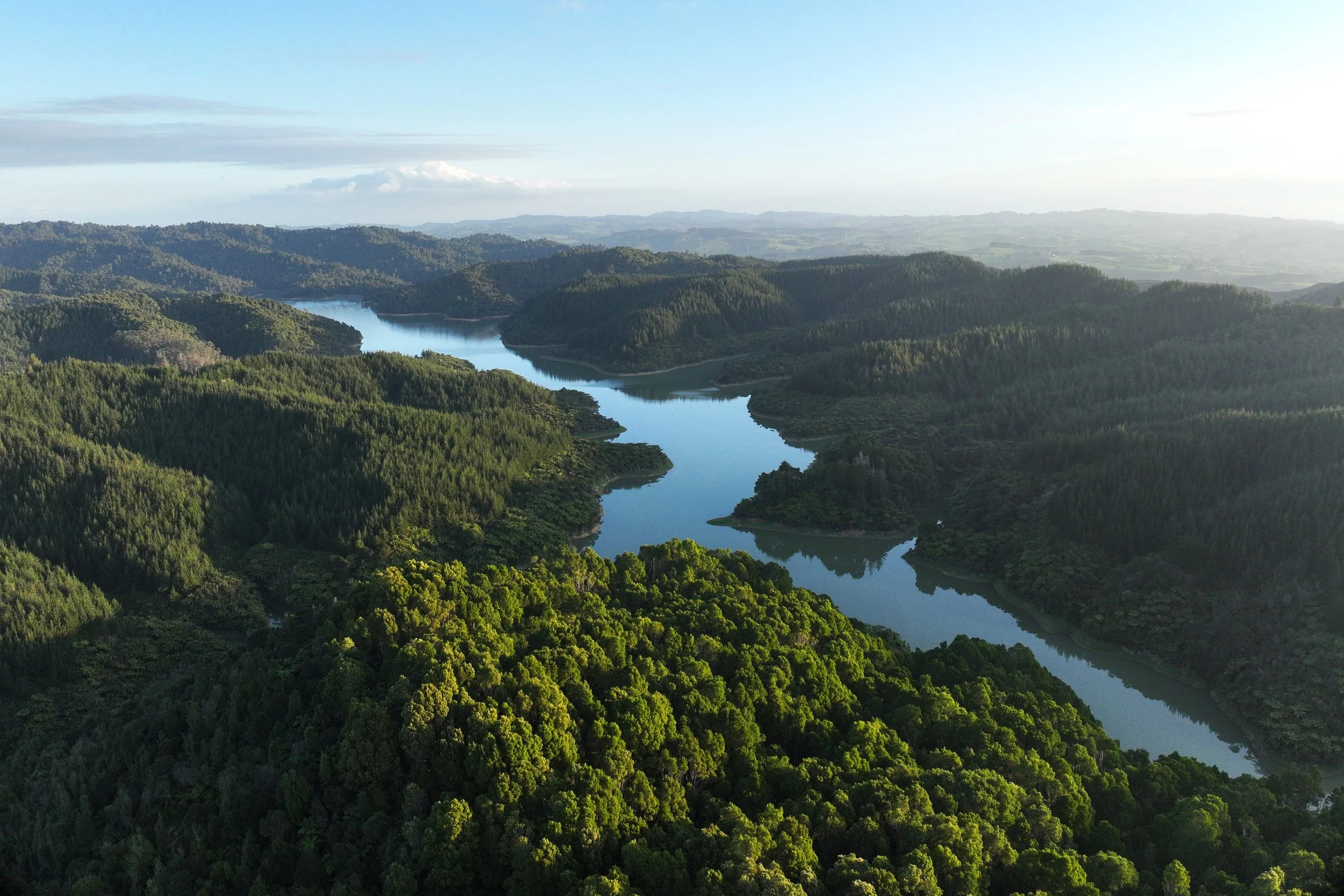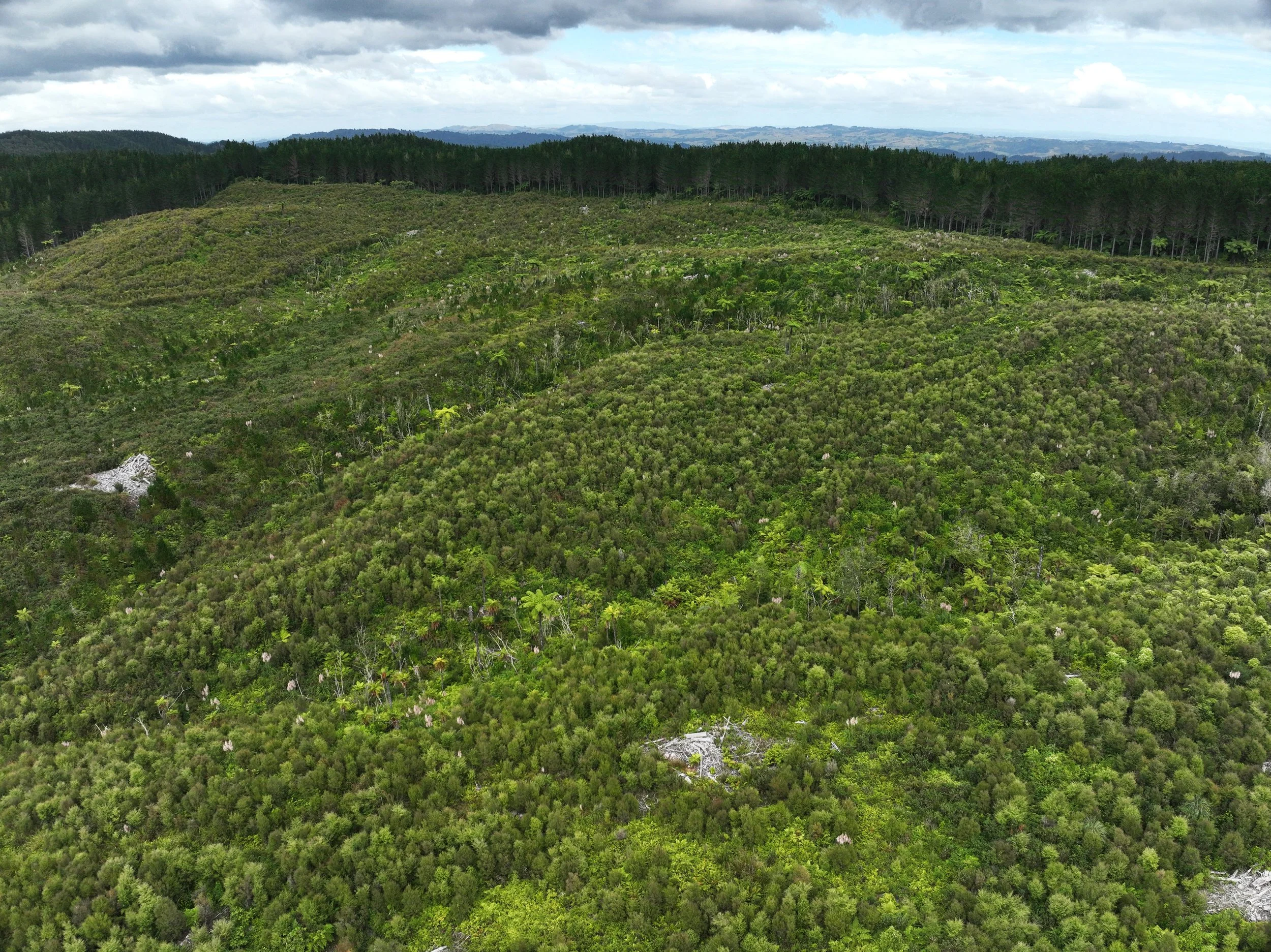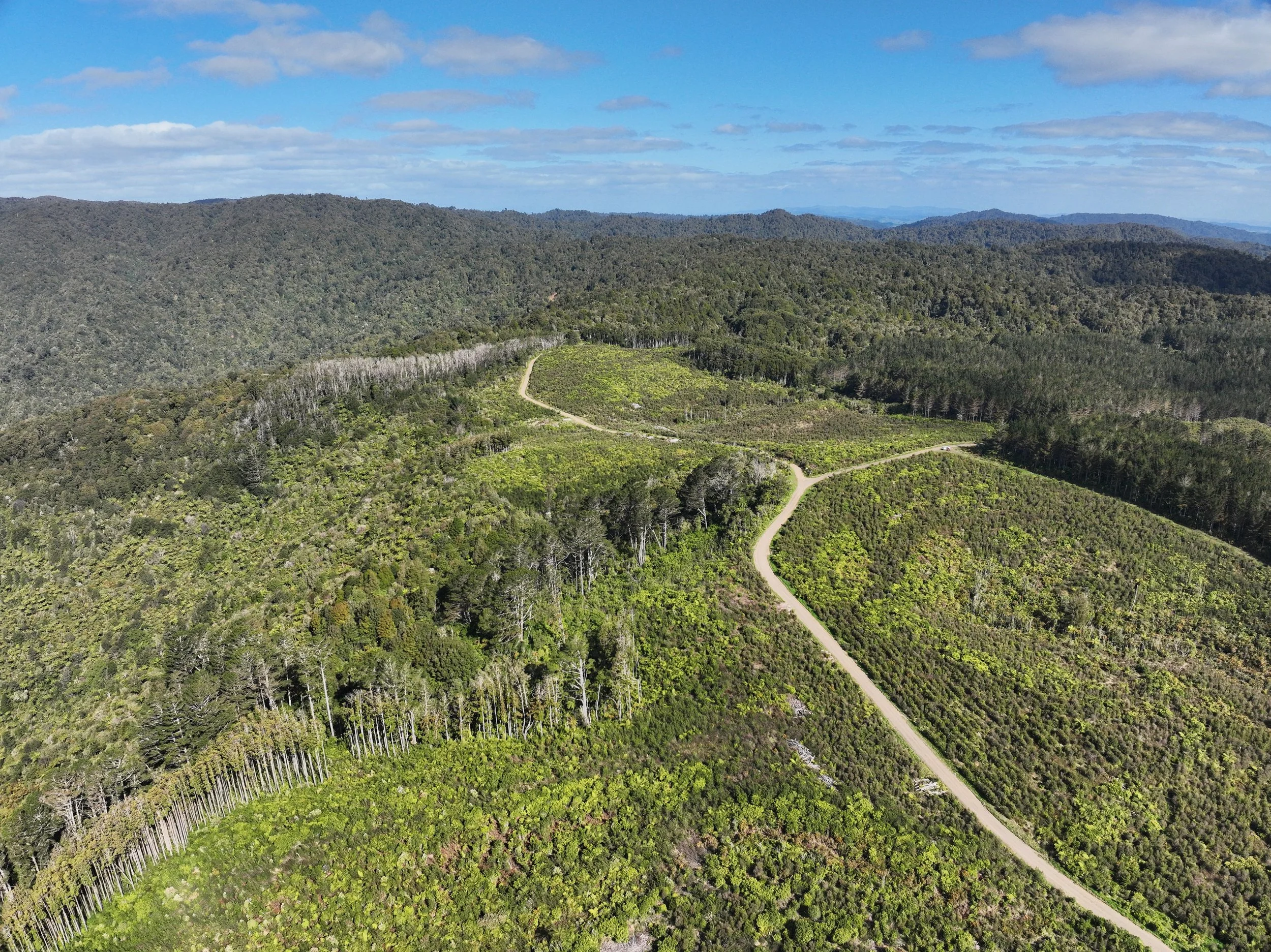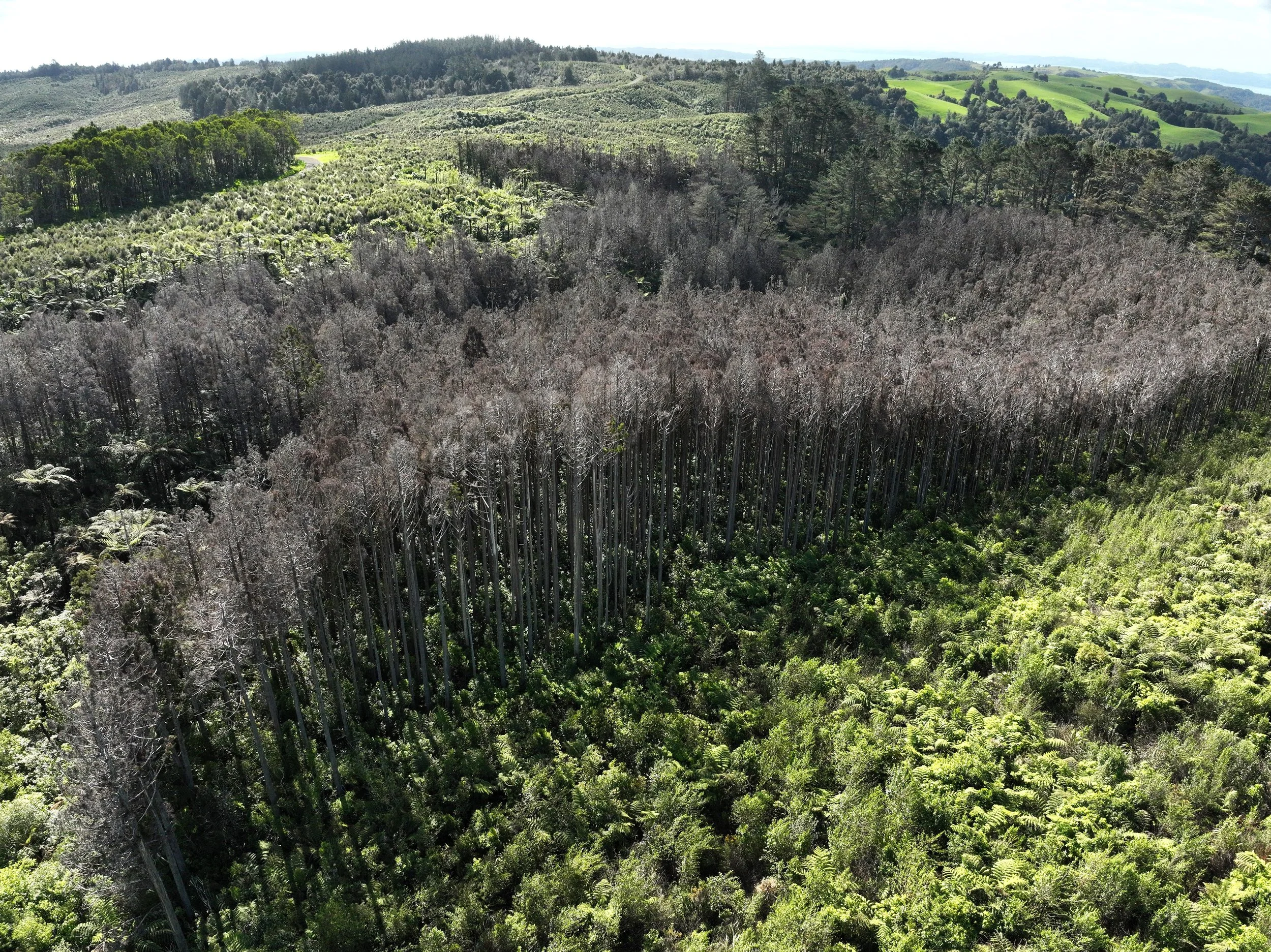Hūnua Native Forest Restoration: Project Update
We published our first case study on our Hūnua Forest Restoration work in 2022 - you can read it here.
Cosseys reservoir in the Hūnua project area.
The dams located within the Hūnua Ranges, managed by Watercare, typically contribute around 60% of Auckland’s water supply. Since acquiring a forest right in 2017 which allows them to manage plantation forestry around the reservoirs, Watercare has spearheaded one of Aotearoa’s largest native forest restoration projects to enhance the catchment and safeguard water quality for Auckland. This ambitious initiative involves transitioning 2,140 hectares of exotic forest into native forest, while gradually phasing out commercial forestry operations.
Whirika provides technical support to guide the restoration process, ensuring that optimal restoration pathways are followed with minimal risk to the water supply. Our role has included testing, monitoring and refining various restoration methods, and advising on management methods for operational implementation. Below are some of the key approaches:
Project Trials & Learnings:
(1) Harvest-and-plant trial to determine optimum restoration regimes on cutover sites: 116.5 ha of plantation forest was harvested and planted with natives in 2018-2019. Different site preparations, plant spacing, and post-planting weed control were trialled. The performance of native plantings and the response of weeds were measured and statistically analysed. From this, we calculated an optimal plant spacing to cost-effectively and rapidly establish a native canopy on ex-forestry land, while also gaining valuable insights into how native plantings and weeds respond to different site preparation regimes.
Harvest & plant trial.
Harvest & plant trial.
(2) Thin to waste of pines to restore native forest: While the harvest and plant pathway is a great option to restore native forest on cutover sites, it’s potentially expensive and relatively risky due to the ‘window of vulnerability’ during which soil is left bare before native plantings develop canopy and root systems that protects land from erosion. As an alternative, we trialled gradually thinning the standing trees and leaving them to decompose in situ (thin to waste) to allow more light to enter the forest while minimizing disturbance. The impact of this method was monitored, providing data that validates the considerable benefits of this approach.
Thin to waste trial.
(3) Herbicide drill & fill of exotic trees to restore native forest: Outside the drinking water catchment, we tested three herbicides applied through a drill-and-fill method (drilling holes in trunks and injecting herbicide) on Acacia and Cryptomeria stands, measuring the response of the native understorey. We also trialled ring-barking of plantation trees to assess whether it offered a different, and potentially lower environmental risk, alternative to herbicide. Both methods - each best suited to slightly different scenarios - showed promise with growth and expansion of native species.
Cryptomeria drill & fill.
(4) Seedpod trial: We partnered with Envico Technologies and other agencies to test if seedpods are a viable method for restoring native forest. This method was tested on a cutover area in 2021 and demonstrated successful germination and growth from seedpods.
Whirika staff member monitoring seedpods.
What Comes Next?
The Hūnua native forest restoration project is a significant, long-term effort expected to span the next decade. We remain focused on supporting Watercare to ensure quality implementation, proactively addressing management needs, and anticipating future challenges. Current priorities include:
Assessing erosion risks associated with forestry, and the potential impact of this on water supply.
Developing a comprehensive long-term Forest Management Plan to guide sustainable outcomes.
More broadly, through close collaboration with Watercare, we have gained valuable insights into how to transition exotic plantation forests to native forests under a variety of scenarios. The tools we have refined present an exciting opportunity to build more resilient landscapes that deliver lasting biodiversity and social benefits across Aotearoa.






